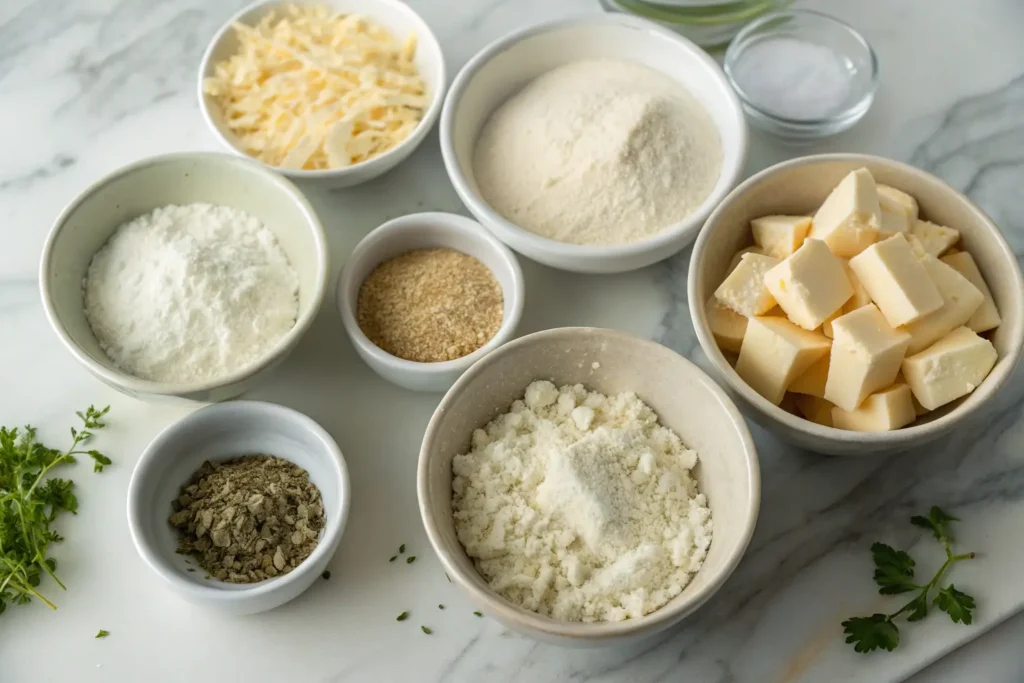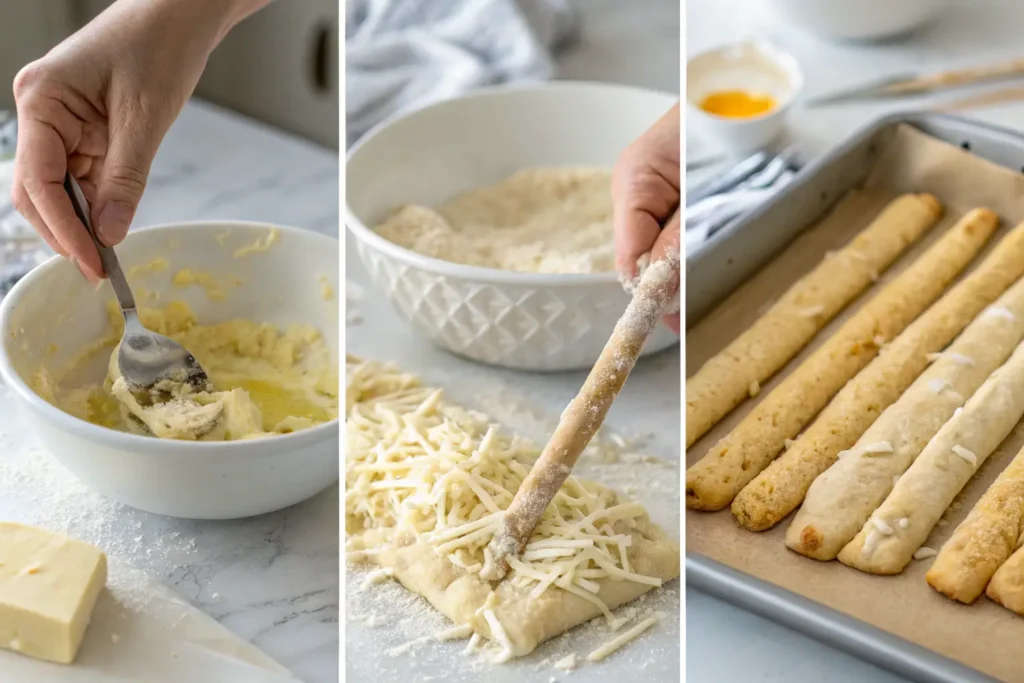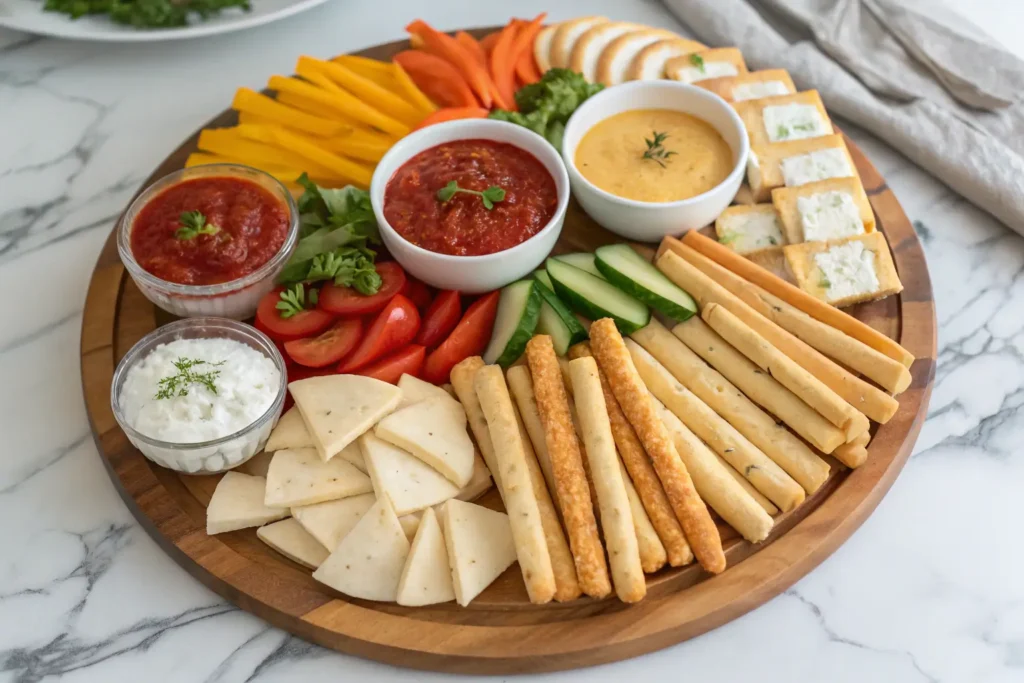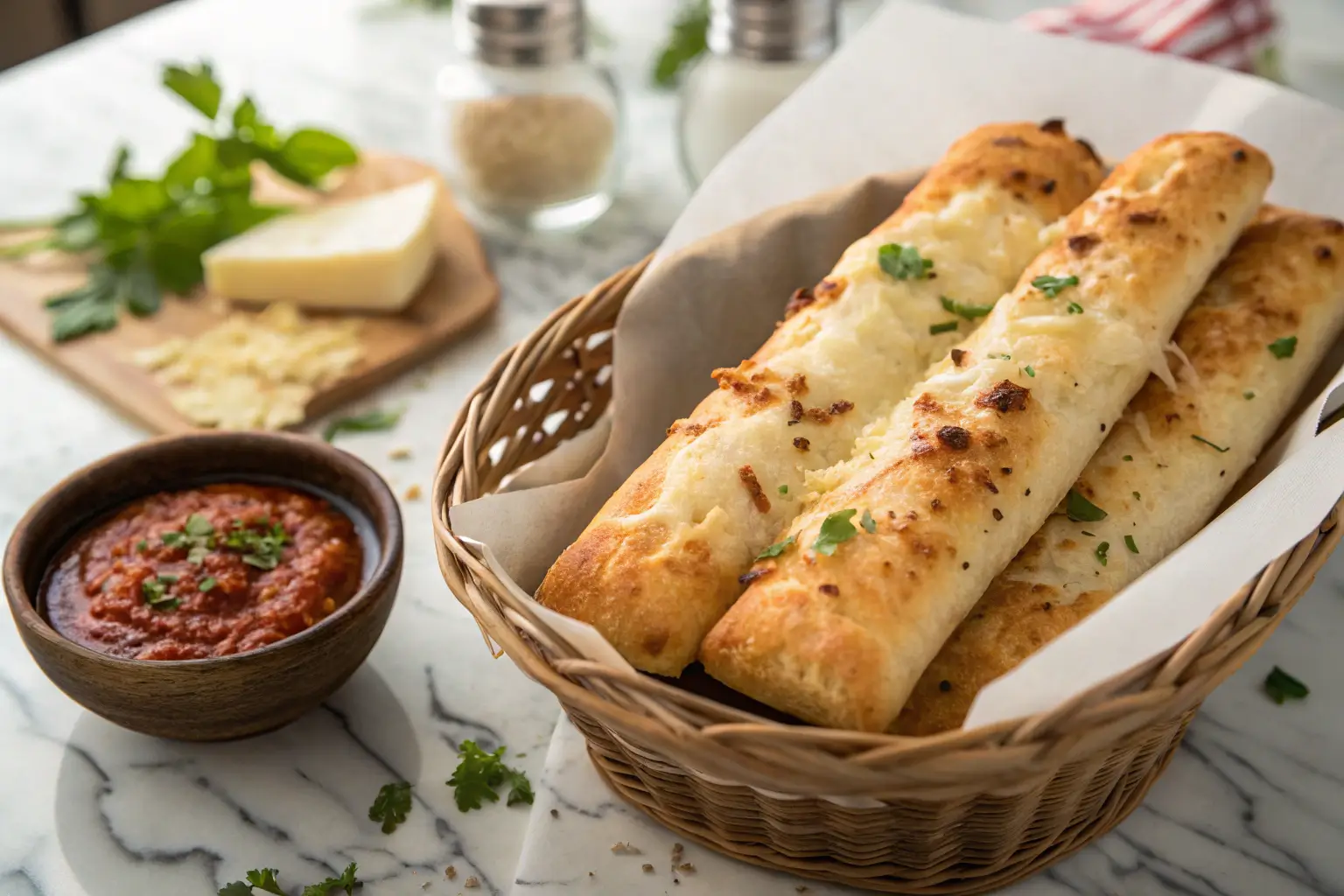Introduction
Cheese & Breadsticks is one of those irresistibly comforting combos that brings people together around the table. There’s something magical about the aroma of fresh dough baking in the oven, coupled with the savory tang of melting cheese. In this article, you’ll explore where Cheese & Breadsticks began, how they’ve evolved, and why they continue to win hearts worldwide. We’ll dig into traditional recipes, experiment with modern twists, and uncover the best dips and sauces to elevate every mouthful. So buckle up—because we’re about to embark on a flavorful adventure through culinary history, recipe tips, and presentation hacks to make your next gathering a scrumptious success.
Table of contents
- A Brief History of Cheese & Breadsticks
- Exploring Popular Cheese & Breadstick Variations
- Healthier Twist on Cheese & Breadsticks
- Step-by-Step Guide to Making Homemade Cheese & Breadsticks
- Pairing Cheeses Beyond Mozzarella
- Dips, Sauces, and Toppings to Elevate Cheese & Breadsticks
- Serving Suggestions and Presentation Tips
- FAQs – People Also Ask About Cheese & Breadsticks
- Storing and Reheating Cheese & Breadsticks
- Conclusion and Final Thoughts
A Brief History of Cheese & Breadsticks
Tracing the Origins of Breadsticks
Breadsticks, or crispy breadsticks as they’re often known, have been a staple in Italian cuisine for centuries. Legend has it that these slender delights first appeared in the Piedmont region, near Turin, as a creative solution to help young royalty digest more easily. Over time, bakers honed their craft to produce perfectly oven-baked breadsticks—light, crunchy, and flavorful enough to be served with soups or as Italian bread appetizers.
Moreover, breadsticks gained popularity throughout Europe thanks to traveling merchants and curious food enthusiasts who loved their convenience and versatility. In fact, their simplicity made them a canvas for endless variations—garlic-infused, herb-studded, or swirled with grains. Today, you’ll find soft dough sticks in some places, while other spots swear by a drier, crisper version. Nonetheless, the essence remains: an easy-to-eat bread product that pairs beautifully with creamy, savory, or tangy accompaniments.
The Emergence of Cheese Pairings in Culinary Traditions
As breadsticks spread across borders, cheese swiftly followed. People discovered that dipping these golden rods into melted cheese or topping them with artisanal cheese blends offered a whole new dimension of flavor. Indeed, cheesy bread appetizers began popping up at banquets and street stalls alike. The pairing likely grew out of sheer practicality—cheese was accessible and could be stored for longer periods.
Additionally, the introduction of regional cheeses like mozzarella, Parmesan, and goat cheese gave rise to an exciting variety of taste profiles. With each region introducing its own cheese specialties, the popularity of Cheese & Breadsticks soared, securing their rightful place in food lore around the world.
Exploring Popular Cheese & Breadstick Variations
Classic Mozzarella Breadsticks
When it comes to Cheese & Breadsticks, mozzarella often takes center stage. Indeed, this creamy, mild cheese melts beautifully and provides that iconic “cheese pull” that makes everyone smile. At home, you can keep things simple by using frozen bread dough, shaping it into thin strips, and sprinkling shredded mozzarella on top. Then, you can drizzle a bit of olive oil and a pinch of salt for added flavor. Meanwhile, many home cooks also like to brush each breadstick with garlic butter before adding the cheese to boost taste even more.
Furthermore, it’s a breeze to serve these classic mozzarella breadsticks alongside marinara sauce or a basic tomato dip. That way, each crunchy bite blends with the tangy sauce, creating the perfect comfort snack. Above all, they’re ideal for parties and family gatherings because they’re quick to bake and easy to handle. In short, classic mozzarella breadsticks are a must-try if you love Cheese & Breadsticks and want to satisfy your craving for gooey, savory goodness.
Cheesy Garlic & Herb Breadsticks
For those who crave bolder flavors, cheesy garlic and herb breadsticks really hit the spot. In fact, adding fresh basil, oregano, or rosemary to your dough brings out a fragrant scent you can’t resist. Plus, brushing melted garlic butter on top before baking ensures each bite packs a punch. Many bakers like to blend grated Parmesan with other artisanal cheese blends, such as Gruyère or Cheddar, for a richer flavor profile.
Moreover, these breadsticks look as good as they taste. Simply finish them with a dusting of herbs or a bit of extra cheese, and watch them turn golden-brown in the oven. You can pair them with creamy dips like ranch or spinach artichoke for added decadence. Whenever you want a hearty snack or a side dish bursting with aroma, cheesy garlic and herb breadsticks are a delightful choice.
Healthier Twist on Cheese & Breadsticks
Whole Wheat & Multigrain Breadsticks
If you’re aiming for a healthful take on Cheese & Breadsticks, whole wheat and multigrain breadsticks might be the ideal choice. Not only do they offer more nutrients and fiber compared to white flour versions, but they also possess a nutty flavor that pairs wonderfully with cheese. To prepare these guilt-free snacks, swap some or all of the all-purpose flour in your dough recipe with whole wheat or a multigrain mix. Then, knead well and allow the dough to rest so the grains can absorb moisture.
Likewise, you can add seeds or nuts into the dough for extra crunch and a boost of protein. Plus, baking them until they’re golden on the outside but still tender on the inside will help capture the essence of soft dough sticks. Serve them with low-sodium tomato sauce or drizzle them lightly with olive oil. Thanks to their hearty taste, these healthier breadsticks can hold their own as a side dish or a fulfilling snack at any time.
Low-Fat Cheese Alternatives and Vegan Options
For an even healthier spin on Cheese & Breadsticks, consider low-fat or plant-based cheese. In fact, using skim mozzarella or vegan cheese can cut down on saturated fats without sacrificing that melty goodness. Moreover, you can experiment with flavor-rich choices like almond-based cheese or soy cheddar to expand your palate. Because these alternatives often carry subtler flavors, it helps to punch up the breadstick dough with herbs, garlic, or a hint of chili flakes.
Meanwhile, pairing these healthier breadsticks with homemade sauces like basil pesto or roasted bell pepper dip can make each bite bright and tasty. If you’re hosting a gathering, offering a variety of cheese options—such as low-fat cheddar or dairy-free mozzarella—ensures that all guests can enjoy the fun. Indeed, it’s proof that you can indulge in Cheese & Breadsticks while still keeping an eye on wellness.
Step-by-Step Guide to Making Homemade Cheese & Breadsticks
Essential Ingredients and Kitchen Tools
First and foremost, gather the right ingredients for Cheese & Breadsticks. You’ll need all-purpose flour or a multigrain blend, active dry yeast, warm water, salt, and a dash of sugar. Of course, don’t forget your preferred cheese—mozzarella, cheddar, or another melting cheese variety. It’s also wise to have olive oil, a rolling pin, a baking sheet, and parchment paper on hand. Because these tools streamline the process, you’ll find baking more enjoyable and less messy.
Moreover, measuring cups and spoons will help you maintain accuracy. Sometimes, a kitchen scale can be even more precise, especially if you’re striving for consistent results. Indeed, having your workspace neatly organized saves time, so set out your mixing bowls and utensils before you begin.

Preparing the Dough: Techniques for Perfect Texture
After you’ve assembled your ingredients, start by dissolving yeast in warm water. Then, add a pinch of sugar to feed the yeast and stir gently. Next, combine the flour, salt, and any seasonings—like garlic powder or dried herbs—in a separate bowl. Slowly pour in the yeast mixture, blending until a soft dough forms. If it feels sticky, dust in extra flour; if it seems too dry, splash in more water.
Meanwhile, knead the dough on a floured surface for several minutes to develop gluten, which gives breadsticks their trademark chew. Cover the dough with a clean towel and let it rest until it doubles in size. This resting phase, or dough proofing technique, is key to fluffy yet crispy breadsticks.
Baking Tips: Achieving the Ideal Crispness vs. Softness
Before baking, shape your dough into slender sticks and top them with cheese. If you like a soft interior crumb, bake at a slightly lower temperature for a few extra minutes. On the other hand, for a crunchy bite, bake at a higher temperature but keep an eye on browning. Additionally, brushing the tops with olive oil or melted butter fosters that golden finish. Once they look lightly browned, pull them from the oven and let them cool on a rack.
Finally, serve your homemade creation while it’s warm and inviting. Whether you dip them in marinara or snack on them plain, these freshly baked Cheese & Breadsticks are sure to delight.

Pairing Cheeses Beyond Mozzarella
Experimenting with Cheddar, Gouda, and Parmesan
Though mozzarella is a classic, there’s a wide world of cheese waiting to top your favorite crispy breadsticks. For instance, cheddar adds a sharp bite, while Gouda boasts a sweet, smoky flavor that pairs wonderfully with herb toppings. Parmesan, on the other hand, brings a salty tang that complements the chewy dough. Moreover, you can mix these cheeses together to create exciting flavor layers—think a sprinkle of Parmesan with a final drizzle of Gouda.
Additionally, feel free to play with textures. Harder cheeses like Parmesan often work best when finely grated, whereas softer cheeses such as cheddar or Gouda can be shredded or sliced. However, remember to monitor your baking time. Softer cheeses may brown faster, so check the oven regularly to prevent burning.
Specialty Cheeses: Goat Cheese, Blue Cheese & Vegan Alternatives
If you’d like to go bold, goat cheese and blue cheese can take your Cheese & Breadsticks to the next level. Goat cheese delivers a creamy tang that balances well with sweet dips like honey mustard, while blue cheese supplies a strong, savory punch best paired with crunchy toppings like walnuts.
Meanwhile, for those opting for vegan fare, there are plenty of plant-based options that melt just as well. Almond-based cheese can impart a subtle nuttiness, whereas soy cheddar mimics the color and gooey quality of dairy cheese. Because tastes differ, experiment in small batches until you find that perfect combination.
Balancing Flavors for the Best Cheese & Breadsticks Experience
Ultimately, successful flavor pairing means finding harmony. If you’re using a robust cheese, opt for a mild sauce or vice versa. This way, no one taste overwhelms the other. In addition, think about texture—mixing a soft, creamy cheese with a crisp breadstick can deliver that satisfying crunch-to-melt ratio. Indeed, balancing flavors can transform your snack into a memorable culinary moment.
For more delicious recipes, check out our recipe article to discover a variety of creative ways to elevate your table.
Dips, Sauces, and Toppings to Elevate Cheese & Breadsticks
Traditional Marinara and Pesto
When it comes to Cheese & Breadsticks, no sauce pairing is more classic than marinara. Indeed, this tangy tomato base works wonders with cheesy bread by offering a bright, zesty flavor. To make it, simply simmer crushed tomatoes, garlic, olive oil, and basil until the sauce thickens. Because the acidity cuts through the richness of cheese, each bite feels light yet satisfying. Meanwhile, pesto provides an equally delicious alternative. With basil, pine nuts, Parmesan, and olive oil, pesto delivers a strong herb flavor that elevates every nibble.
Additionally, you can serve marinara or pesto in small bowls, making it easy to dip your breadsticks on the go. Plus, these sauces also double as great pizza toppings or pasta bases. Thus, if you have leftovers, feel free to store them in airtight containers and use them later.
Creamy Ranch, Spinach Artichoke Dip, and Other Favorites
For a creamier option, ranch dressing can’t be beat. Its cool, herby taste balances the warm chew of Cheese & Breadsticks, especially when you add a little pepper to the mix. Yet, if you’re craving something even heartier, go for spinach artichoke dip. This classic blend of spinach, artichoke hearts, cream cheese, and seasonings gives each dip a velvety texture.
Moreover, you could experiment with other beloved dips like queso or a roasted garlic aioli. Because these toppings add variety, your guests can try different flavor profiles in one sitting. In fact, setting out multiple dips or sauces ensures everyone finds a taste that suits their mood. Ultimately, a mix of tangy, savory, and creamy dips keeps your table exciting and fun for all.

Serving Suggestions and Presentation Tips
Ideal Occasions: Parties, Appetizers, or Side Dishes
Many hosts choose Cheese & Breadsticks for parties, potlucks, or casual family get-togethers. Indeed, they’re perfect as appetizers because they’re easy to hold and taste great whether served hot or at room temperature. Moreover, they pair well with soups, salads, or grilled dishes, making them a flexible side item for any meal. When planning a buffet, place them near sauces and dips, so guests can create custom flavor combinations on the fly.
Additionally, these versatile breadsticks can be prepped ahead of time and baked right before serving, which is a lifesaver when you’re juggling multiple menu items. Consequently, your stress levels stay low while your guests stay happy and fed.
Styling Your Cheese & Breadsticks for Instagram-Worthy Photos
Presentation counts when you want to impress your friends (or your social media feed). Simple touches like a rustic wooden board or a colorful napkin can really showcase the golden color and subtle herbs on your breadsticks. As a further accent, garnish each piece with a pinch of grated cheese or chopped parsley for a pop of green.
Meanwhile, lighting is everything. Make sure there’s enough natural or soft light to highlight the cheesy pull and fluffy interior. Sprinkle a few grains of sea salt around the edges to look appetizing. Above all, remember that the best food photos happen when people can almost taste it through the screen. A little staging goes a long way in capturing those mouthwatering moments.

FAQs – People Also Ask About Cheese & Breadsticks
FAQ 1: What Type of Flour Works Best for Breadsticks?
Many bakers prefer all-purpose flour because it’s easy to find and works well for crispy breadsticks. However, you can also use bread flour if you want a chewier bite. Whole wheat or multigrain flour offers extra fiber and a slightly nutty taste. Because each flour has a unique texture, pick the one that best matches your preference.
FAQ 2: Which Cheese Melts Perfectly on Breadsticks?
Mozzarella is known for that classic cheese pull, so it’s a popular choice for Cheese & Breadsticks. Yet cheddar, Gouda, or even certain vegan cheeses can also melt beautifully. By mixing different cheeses, you can add complexity and depth to your breadsticks.
FAQ 3: Can I Freeze Breadsticks for Later Use?
Absolutely! First, let them cool completely. Then, store your breadsticks in airtight freezer bags or containers. When you want to enjoy them again, thaw them at room temperature and reheat briefly in the oven. This simple method helps maintain both flavor and texture.
FAQ 4: How Do I Prevent My Breadsticks from Drying Out?
After baking, place them in a bread basket or wrap them in foil to lock in moisture. You can also store any leftovers in a sealed bag or container. Because air exposure leads to staleness, limiting airflow is key to keeping breadsticks soft and fresh.
FAQ 5: Are Cheese & Breadsticks Healthy If Made at Home?
Yes, especially if you pick wholesome ingredients and control the cheese portions. When using whole wheat flour, low-fat cheese, or vegan options, your homemade Cheese & Breadsticks can be a nutritious snack or side dish.
Storing and Reheating Cheese & Breadsticks
Best Practices for Keeping Breadsticks Fresh
To preserve their flavor, let your breadsticks cool fully before sealing them in an airtight container or resealable plastic bag. If you’ve used herbs or a brush of garlic oil, consider wrapping the breadsticks individually to avoid sticking. Because moisture can cause sogginess, place a paper towel inside the container to help absorb excess humidity.
Simple Reheating Methods to Retain Texture
When you’re ready to serve leftover Cheese & Breadsticks, preheat your oven to a moderate temperature—about 350°F (175°C). Place the breadsticks on a baking sheet and warm them for around five minutes, or until the cheese is slightly bubbly. This technique revives their crisp exterior while keeping the interior soft. If you’re short on time, you can microwave them in short bursts, but note that this may reduce their crunch. By following these steps, you’ll enjoy delicious breadsticks every time.
Conclusion and Final Thoughts
In the end, Cheese & Breadsticks remain a timeless crowd-pleaser that easily brings people together. Because they unite the comforting crunch of bread with the rich taste of melted cheese, they appeal to nearly every palate. Moreover, experimenting with various flours, cheese blends, and dips keeps the possibilities fresh and exciting. Whether you opt for a healthier twist or go all-out with indulgent toppings, you’ll find that these simple yet satisfying bites fit right into any meal plan. Indeed, Cheese & Breadsticks embody culinary creativity, leaving room for personal touches and innovative flavors that can transform any gathering into a memorable event.

